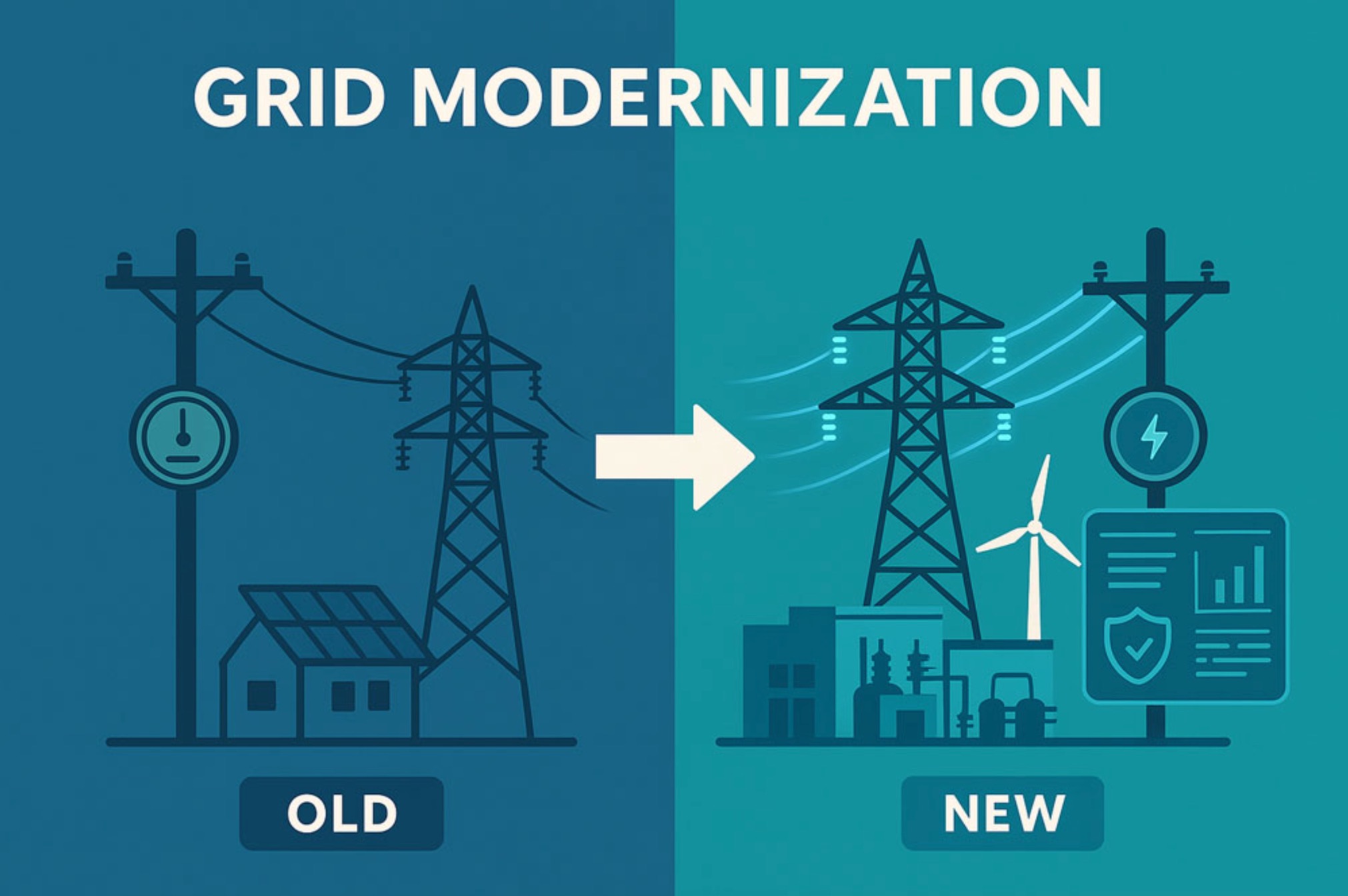
The utility sector has to navigate and deal with regulation changes. This regulation shift is caused by:
- Energy transition acceleration.
- Technology advancement.
- Customer expectations are shifting.
All of this causes regulatory changes to accelerate.
Shift in the Regulatory Landscape
New federal and state mandates are affecting regulation at a higher level. Environmental standards, grid modernization, and data privacy laws are evolving. This influences reshaping the regulatory landscape.
For compliance officers and utility executives, keeping up is no longer optional, it’s imperative. This helps manage your risk and provides strategic advantages.
Why Proactive Compliance Matters
Compliance and regulations have and continue to change. Current regulatory changes in the utility sector happen frequently. These can have operational and financial consequences.
Proactive compliance anticipates and responds to new requirements. This can help utilities avoid costly penalties, stay updated on regulations, and remain industry leaders.
This article breaks down the latest regulatory shifts and provides actionable compliance strategies. Use our best practices for navigating regulatory changes in the utility sector.
Key Regulatory Changes Affecting the Utility Sector
There have been several landmark legislative updates that directly impact utilities:
- FERC Order No. 2222 Implementation. Requires utilities to open up wholesale markets to distributed energy resources (DERs); such as rooftop solar and battery storage. Grid management and market strategies must be adapted.
- EPA Clean Power Plan Updates. The Environmental Protection Agency (EPA) passed stricter emission standards for power plants. Meant to accelerate coal retirement and greenhouse gas reduction. Utilities are under pressure to invest in cleaner generation and carbon tracking.
- State-Level Grid Modernization Mandates. States like California, New York, and Illinois enacted laws requiring utilities to invest in different areas. Areas like metering infrastructure and grid resilience measures.
- Data Privacy and Cybersecurity Laws. States are passing stricter data privacy and cybersecurity regulations. This requires utilities to improve their IT governance and incident response protocols.z

Upcoming Regulatory Trends
There are several trends that are set to define the utility regulatory landscape in the near future.
- Decarbonization Targets: More jurisdictions are setting net-zero emissions deadlines. Requiring utilities to accelerate renewable integration and retire fossil assets.
- Equity and Affordability Measures: New rules around rate design and customer assistance programs are emerging. Giving fair access to energy services.
- Real-Time Grid Transparency: Regulators are pushing for increased transparency in grid operations and outage reporting. Requiring new data management capabilities.
- Enhancing Reliability Standards: Critical infrastructure standards are being strengthened due to extreme weather events.
Strategies to Stay Ahead of Regulatory Changes
Build a Compliance-First Culture
A compliance-first culture starts at the top. Leadership must champion regulatory compliance not just as a legal requirement, but as a core value. This is meant to support customer trust and operational excellence.
- Make compliance a key performance indicator for executives and managers.
- Have open communication around compliance issues.
- Align compliance sustainability and customer satisfaction..

Leverage Technology for Regulatory Monitoring
Manual tracking of regulatory changes is no longer viable. The volume and complexity of new requirements make it impossible.
- Regulatory Intelligence Platforms: Tools that aggregate and analyze new laws, rulemakings, and guidance from agencies like FERC, EPA, and state commissions.
- Automated Alerts and Workflow Tools: Implement systems notify stakeholders of relevant changes and track implementation tasks.
- Data Analytics for Compliance: Use advanced analytics to identify risks, monitor compliance performance, and generate required reports.
Regular Staff Training and Education
Everyone should comply with regulations. This is why consistent training ensures that everyone understands their responsibilities under new rules.
Getting your team trained can be done through quarterly compliance workshops, eLearning modules, and even running simulation exercises.
Engage with Industry Associations and Regulatory Bodies
Staying connected to industry groups and regional utility associations is invaluable. These organizations offer:
- Early insights into upcoming regulations.
- Forums for sharing best practices and lessons learned.
- Opportunities to participate in rulemaking processes or pilot programs.
Impact of New Laws on Utility Operations
New utility regulations are prompting significant operational changes.
- Grid Modernization: Utilities are upgrading their infrastructure. Handling two-way power flows, integrating DERs, and enhancing distribution automation.
- Emissions Compliance: Power plants are investing in cleaner technologies, carbon capture, and advanced monitoring systems.
- Customer Data Management: IT teams are overhauling systems to comply with privacy and reporting mandates. This includes secure storage and encrypted data transmission.
After FERC Order 2222, a midwestern utility launched a pilot to integrate community solar and battery storage into its grid. This required new interconnection processes, real-time monitoring, and tariff modifications. This enhanced compliance and reliability.

Financial Implications
Regulatory changes often come with new costs, as well as opportunities.
They bring about capital expenditures through grid upgrades, cybersecurity investments, and emissions controls. All of these require significant funding.
Utilities must work with regulators to ensure that necessary investments can be reflected in customer rates.
Many new laws offer incentives for early compliance. They also impose escalating penalties for violations.
Reporting and Documentation Changes
Regulators are demanding more granular and timely reporting. This leads to utility companies needing better reporting practices and systems.
- Environmental Reporting: Detailed emissions, water use, and fuel mix data are now required, often via online portals.
- Incident Reporting: Utilities must report cyber incidents, outages, and compliance breaches within strict timelines.
- Customer Impact Reports: Demonstrating how new programs (e.g., demand response) benefit consumers and meet equity goals.
Best Practices for Compliance Management
Develop a Regulatory Change Management Plan
Be prepared and react to any regulatory change with a structured change management plan. Allows for effective and quick compliance.
- Regulatory horizon scanning through regular reviews of pending legislation and rulemakings.
- Impact assessments help evaluate how regulatory changes affect operations, finance, and customers.
- Have an implementation roadmap that assigns responsibilities, sets deadlines, and allocates resources.
- Communicate with stakeholders by keeping internal teams, regulators, and customers informed.
Conduct Regular Compliance Audits
Routine audits will help identify gaps before they become liabilities.
- Conduct internal audits by compliance teams, focusing on high-risk areas.
- Include external audits by third-party assessments for objectivity and credibility.
- Allow for continuous monitoring through dashboards and KPI tracking for ongoing compliance.
Use Compliance Software Solutions
Using specialized software can streamline compliance efforts.
- Document Management: Centralize compliance policies, procedures, and evidence.
- Workflow Automation: Assign, track, and escalate regulatory tasks.
- Regulatory Libraries: Maintain a searchable, up-to-date database of relevant laws and standards.
- Audit Trails: Ensure all actions are logged and traceable for review.
Proactive Compliance is a Benefit for Utilities
Proactive compliance is more than a shield against fines, it’s a strategic asset. Utilities that anticipate and adapt to regulatory changes:
- Are able to reduce legal and financial risks.
- Enhance operational resilience and customer trust.
- Lead in innovation, sustainability, and service quality.
Next Steps for Utility Leaders
What should be the next steps for utilities navigating regulatory changes?
- Invest in Technology: Adopt tools for real-time regulatory monitoring and compliance management.
- Foster a Compliance Culture: Make compliance a shared responsibility across your organization.
- Engage Externally: Participate in industry groups and collaborate with regulators to shape future rules.
- Stay Informed: Leverage authoritative resources such as NARUC, FERC, and the EPA.
UISG offers expert guidance on utility sector compliance strategies or custom regulatory assessments. Stay ahead of utility regulations, avoid trouble, and unlock your organization’s full potential in this rapidly changing landscape.